Outpatient and Laboratory Services
For many years outpatient services had been provided in a stand-alone building on Hospital Rd, and laboratory services were provided by the Health Department Laboratory in Sydney St.
In 1913, the first laboratory services on site were located in a newly-erected building directly west of the main hospital corridor and the recently established Xray Department. Outpatient services were transferred into the ground floor of the new building. For some time thereafter, the Hospital Rd building was used for dental and chest disease outpatients.
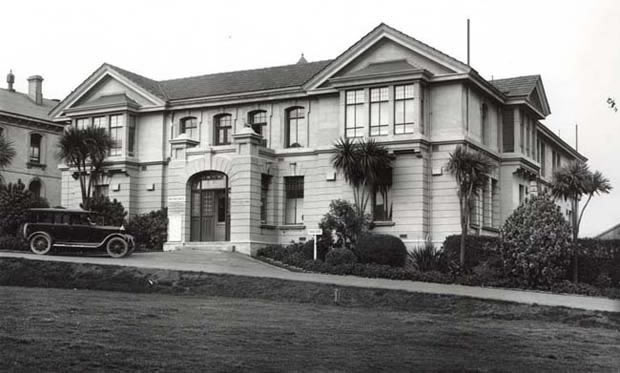
photograph courtesy Alexander Turnbull Library, National Library of NZ, Te Puna Matauranga o Aotearoa
A veranda and balcony were added to Wards 5 and 6 respectively in 1913.
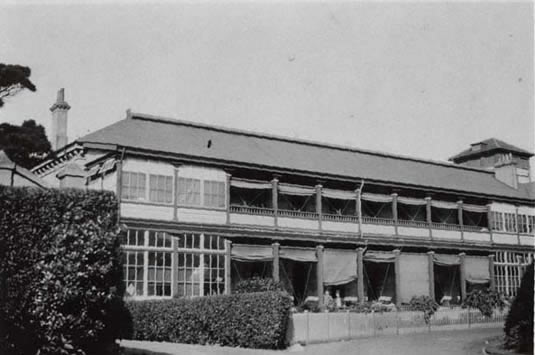
photograph courtesy Photographic Department, Wellington Hospital / Wellington School of Medicine
A new building was erected over the remaining ‘private suite’, between the main entrance block and wards 5 & 6. In this were a nurses’ sick bay, accommodation for resident medical staff and a diphtheria ward.
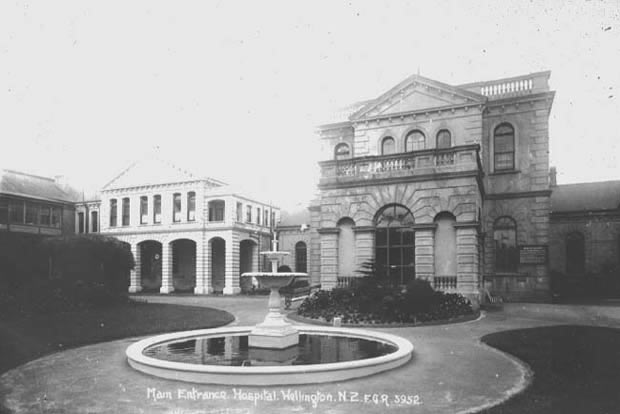 reproduced from the Wellington City Council Archives Collection
reproduced from the Wellington City Council Archives Collection
The Eye, Ear Nose and Throat department
– the hospital’s first specialist service
In 1917 ward 7 was erected as a second storey directly above Ward 4 for EENT patients, and an EENT outpatient department was erected across the ends of wards 4&7 and 3. Later, an EENT theatre was added. The photograph below, taken around 1929 from behind the hospital looking north-east, shows the EENT Department roofline.
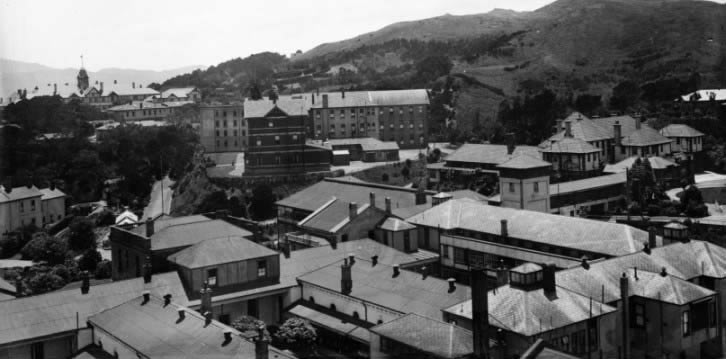
photograph courtesy Alexander Turnbull Library, National Library of NZ, Te Puna Matauranga o Aotearoa
The lift tower and connecting corridor to the Children’s Hospital was not erected until April 1929. This raises the question just how patients and others who could not manage stairs gained access to Wards 6 & 7 before that date? The answer is revealed in Robert Gordon’s notebook. (Archives NZ ABRR 7563 Acc W4990/7i)
(Robert Gordon was a porter at the hospital from 1918 until the 1950s. Towards the end of his career he wrote down in a notebook his recollections of life and work at the Hospital.)
“When I first started work for the Board in January 1918, the old building was much the same as originally built. The wards were then, from what is now known as wards one to six, but were known by their native names, vis. Hinemoa, Rotorua, Arawata, Waiwera, and Fraser (ward 6) and ward 5, the Allen. The Eye ward (ward 7) was completed but not opened. Ward 6 was the only upstairs ward, and believe it or not, the lift at the Ward 5 end of the corridor was hauled up by a windlass. One had to put a patient in a chair, a basket work three wheeled affair, place him or her in the lift and climb a ladder to the top of the lift well and two of us would have to turn the handles until the patient and chair plus escort came up to the level of Ward 6. The faster the other man turned you had to keep up with him literally for your stomach's sake, or a belt in that region from the handle was the penalty for trying to go slow."
the complete notebook can be read here
The hospital in 1923
This 1923 photograph shows the hospital as seen through the main gate, now on Riddiford St rather than Hospital Rd. Visible are the Laboratory and Outpatient, Xray and Theatre blocks.
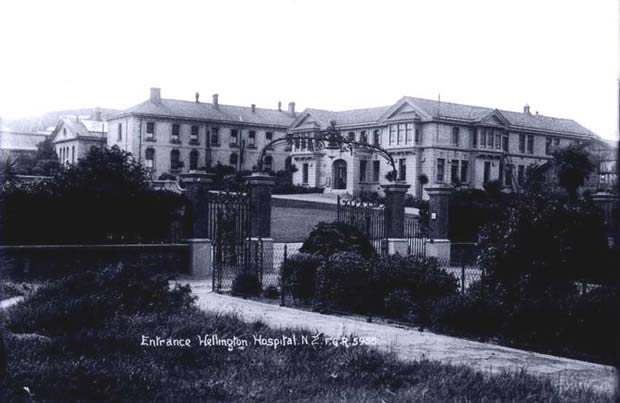
photograph courtesy Alexander Turnbull Library, National Library of NZ, Te Puna Matauranga o Aotearoa
This magnificent panoramic photograph taken in 1923 shows all of the hospital developments at this time. Although much development has occurred since the hospital was opened, the park-like setting to the north has been preserved.

A new wing to the Nurses’ Home was added in 1923, as was a home for the Medical Superintendent. These are seen in the 1925 photograph below. In the foreground are the band rotunda and fountain.
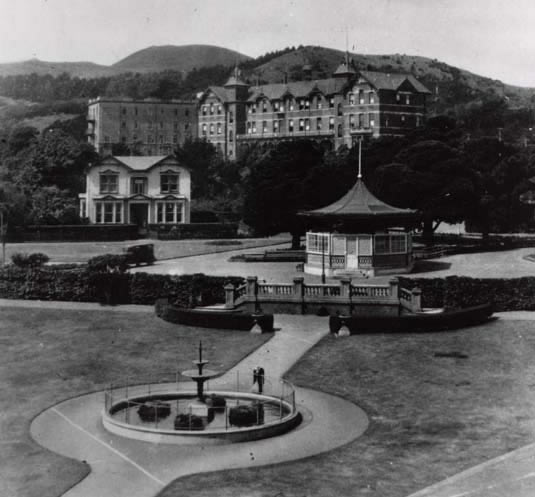
photograph courtesy Photographic Department, Wellington Hospital / Wellington School of Medicine
More facilities needed
With continued population growth came yet more demand for extra facilities. Revised plans for an administration block were developed and approved.
At this time a Royal Commission on venereal Disease was sitting. There had been a significant upsurge in venereal disease in NZ after WW1, and as a result of the enquiry, the government authorized the building of a three-ward block designed to accommodate patients with VD, and to provide more beds in general.
This photograph shows construction of both blocks well underway. (Note the wooden scaffolding)
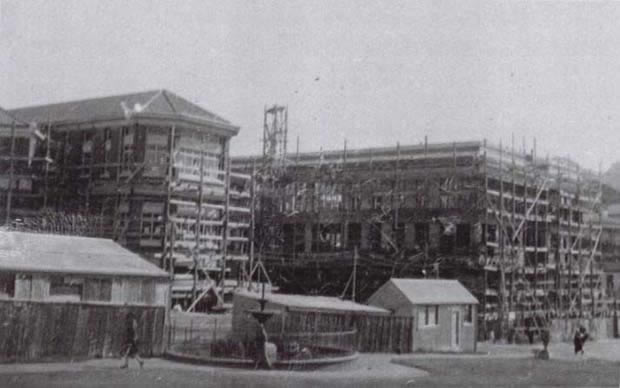
photograph courtesy Archives New Zealand Te Whare Tohu Tuhituhinga O Aotearoa
The Administration Block fronted Riddiford St and the three-ward block was directly behind this and adjacent to the Laboratory / OPD building.
The new buildings were opened in 1927. This photo shows the front administration block. It was built on land previously occupied by the Carrara Ceiling factory.
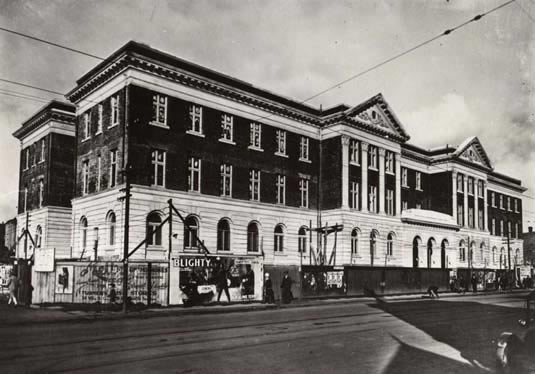
photograph courtesy Alexander Turnbull Library, National Library of NZ, Te Puna Matauranga o Aotearoa
The photograph below was taken in March 1928. The building cost £253,832 to build.
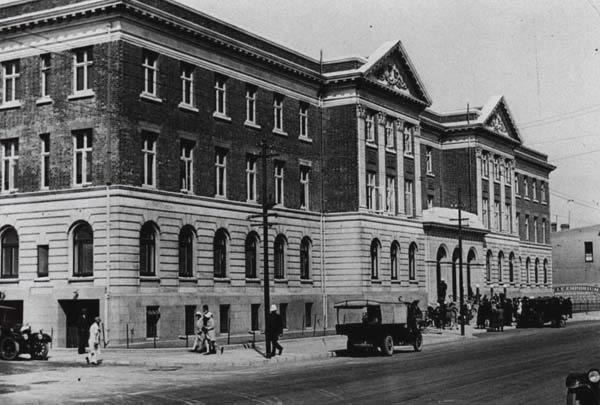
photograph courtesy Photographic Department, Wellington Hospital / Wellington School of Medicine
This photograph below shows the new front block and behind it Wards 8, 9, 10 and 10A. The upper floor of the front block housed the Board Room and administrative offices, the Dental Department, and the house surgeons’ quarters (male). The first floor level housed the Massage Department (Physiotherapy), and a smaller area for resident female house surgeons.
The ground floor housed a new Casualty Department and an area for outpatients.
Wards 8, 9 and 10 (later redesignated Wards 1, 2 and the Cancer Centre) were medical wards. Note the children's play area in the foreground.
photograph courtesy Dr Pete Ellis
This aerial shot shows what was a unique feature of the Wards 8, 9 and 10 complex. There are two toilet blocks per ward, seen as square-shaped columns to the left of the main ward building. This design feature was included to allow separation of patients with syphilis from those with gonorrhea.
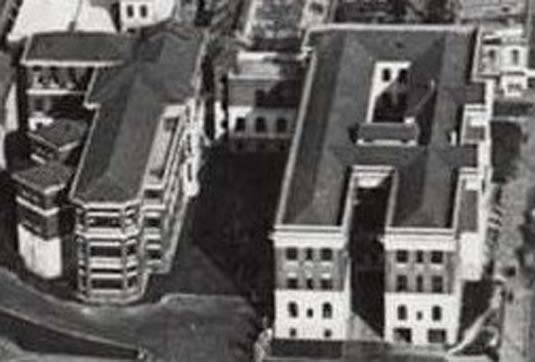
photograph courtesy Alexander Turnbull Library, National Library of NZ, Te Puna Matauranga o Aotearoa
In 1922 the Hospital Board entered into a ten year agreement with the Wellington Boys’ Institute giving them the use of the play area at the front of the hospital grounds, with the condition that they pay a peppercorn rental and be responsible for erecting and maintaining the equipment. The photograph below was taken in 1929.
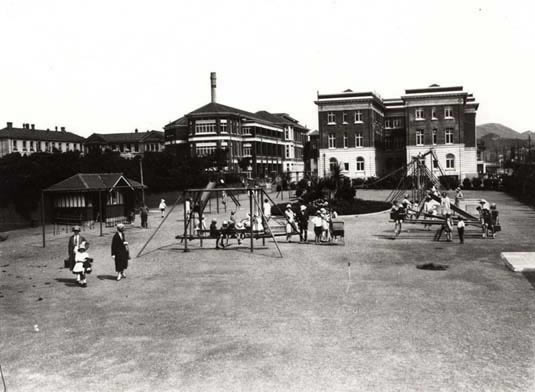
photograph courtesy Alexander Turnbull Library, National Library of NZ, Te Puna Matauranga o Aotearoa
The first cardiology department
From 1926, what had earlier been one of the two original ‘private suites’, became the base for Dr Fred Bowerbank, the hospital’s first cardiologist. The cardiology department occupied the ground floor under the arches as seen in this early 1930s photograph.
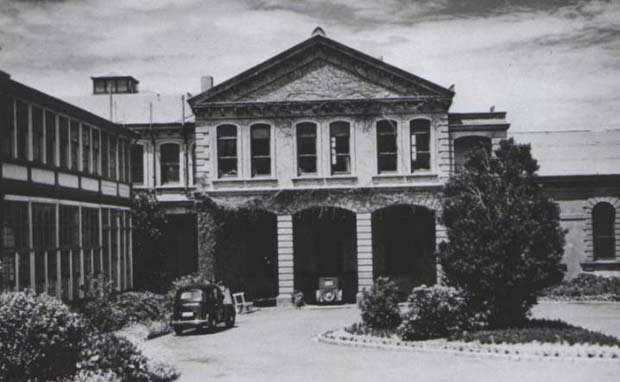
photograph courtesy Archives New Zealand Te Whare Tohu Tuhituhinga O Aotearoa
There follow four photographs taken in the 1930s from varying perspectives.
This 1932 photograph shows the south-eastern portion of the hospital. Note the "Tin Shed" in the centre-left of the photo.
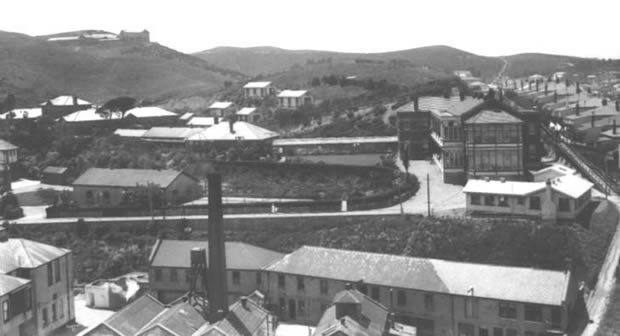
photograph courtesy Alexander Turnbull Library, National Library of NZ, Te Puna Matauranga o Aotearoa
This 1936 aerial shot shows the full extent of hospital development. A corridor (largely obscured in the photo) had been constructed, connecting the front block, Wards 8, 9, 10 and 19A, with the Laboratory and X-ray block and the original hospital main corridor.
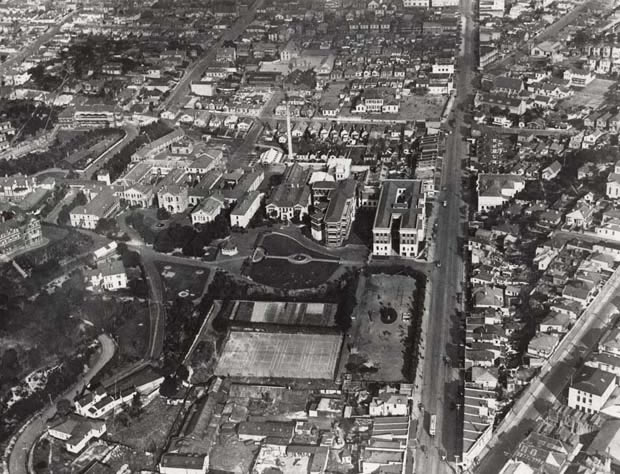 photograph courtesy Alexander Turnbull Library, National Library of NZ, Te Puna Matauranga o Aotearoa
photograph courtesy Alexander Turnbull Library, National Library of NZ, Te Puna Matauranga o Aotearoa
Another 1936 aerial photograph views the hospital from the south-east.
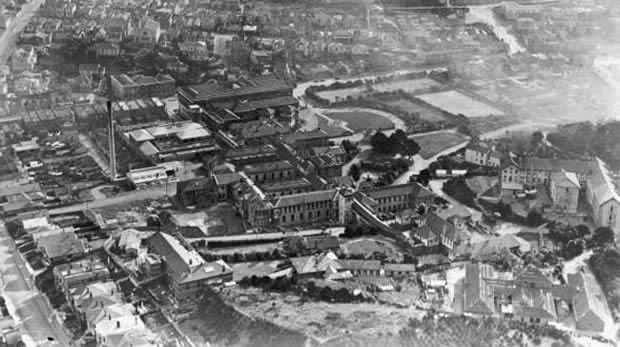 photograph courtesy Alexander Turnbull Library, National Library of NZ, Te Puna Matauranga o Aotearoa
photograph courtesy Alexander Turnbull Library, National Library of NZ, Te Puna Matauranga o Aotearoa
Lastly is a 1938 photograph looking over the Medical Superintendent’s house toward Riddiford St. Although there was severe overcrowding inside, the grounds of the hospital are attractive and well maintained. That peace was soon to be disturbed!
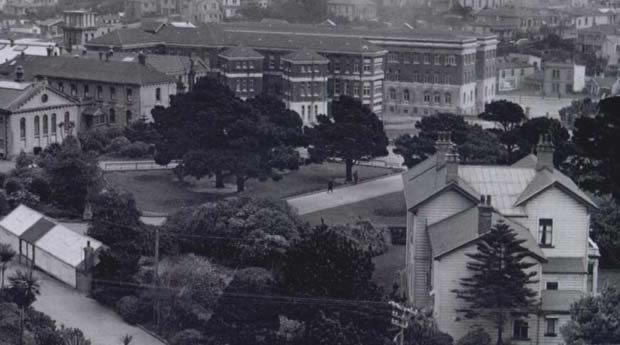
photograph courtesy Archives New Zealand Te Whare Tohu Tuhituhinga O Aotearoa
previous page - the Children's Hospital The Centenary Block
top